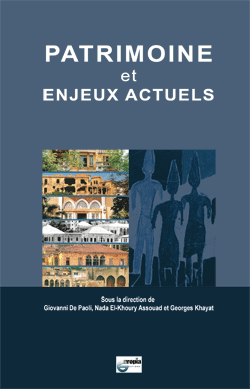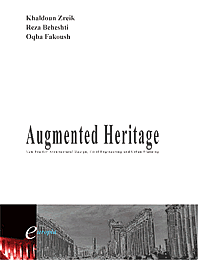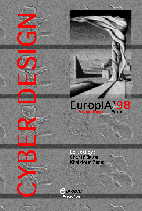Sommaire / Contents
Preface
Editorial
Part 1 Design education and information libraries
Design and evaluation of a collaborative virtual space: InfoBase
Evren AKAR, Bige TUNÇER, Jelle ATTEMA, Rudi STOUFFS
HizmO: History of Izmir architecture on-line: An interactive
database for e-learning architectural history
Yenal AKGUN
Metadata as a means for correspondence in design analysis
Jan KOOISTRA, Rudi STOUFFS, Bige TUNÇER
The SciX Platform - Reaffirming the role of professional soceties in
scientific information exchange
Bob MARTENS, Ziga TURK, Bo-Christer BJÖRK
Virtual university for design: E-teaching and e-learning for design
Rivka OXMAN
Evolutionary collaborative design studios
Aysu SAGUN, Halime DEMIRKAN
A demonstrational case of a visual reference tool model for
architectural heritage
Burcu SENYAPILI
Part 2 Design environments and multimedia
Implementation of an architectural design environment: The development of IDEA+
Stefan BOEYKENS, Herman NEUCKERMANS
Spaces of immersive media: Transformation of spatial enclosure to
interface of information
Ercument GORGUL, Emine GORGUL
A CAAD system based on the capacity design methodology
Cheng-Tah LIN, Ming-Hung WANG
Communicating professional design intentions to the lay public on
the internet
Michael MULLINS, Tadeja ZUPANCIC STROJAN, Matevz JUVANCIC
Virtual Operation Room [VOR]: A time-based architecture for the
augmented body
Kas OOSTERHUIS, Hans HUBERS, Christian FRIEDRICH, Sven
BLOKKER, Michael BITTERMANN, Chris KIEVID
Designing sound to reinforce architectural visualisation
Ahmad RAFI
Motion capture: Animation alternative for creative exploration
Ahmad RAFI
Towards an agent based early design environment: A frameork
implementation using Java
Hans SCHEVERS, Edwin DADO, Reza BEHESHTI
Part 3 Design requirements and objectives, evaluation and generative design
Spatial relations and architectural plans: Layout problems and a
language for their design requirements
Can BAYKAN
On measuring the visual complexity of 3D solid objects
John GERO, Vladimir KAZAKOV
Translating customers' needs into building design process: Quality
Function Deployment
F. Hilal HALICIOGLU
Evolution Aided Architectural Design: An Internet based
evolutionary design system
Patrick JANSSEN, John FRAZER, Ming-Xi TANG
Electronic requirement management: A framework for architectural
requirement engineering
Ipek ÖZKAYA, Ömer AKIN
The National Museum of Australia: A study in generative design 185
John Paul SWIFT
The representation of contextual place for urban and rural planning
Peter SZALAPAJ
Overview of design evaluation towards a comprehensive
computational approach
M. Tanyel TÜRKASLAN-BÜLBÜL, Ömer AKIN, James H. GARRETT, Jr., Burcu AKINCI
Evolutionary development of early stage design alternatives for
buildings
Aant VAN DER ZEE, Bauke DE VRIES















